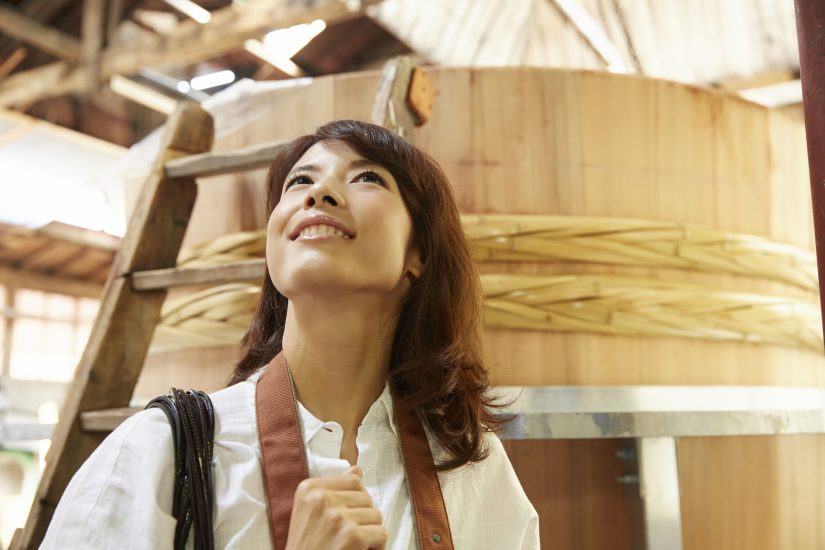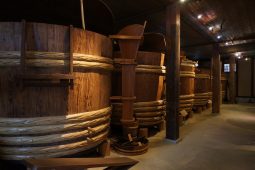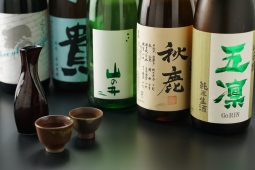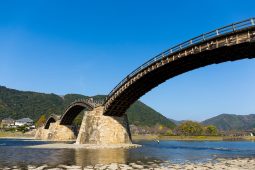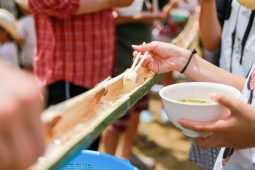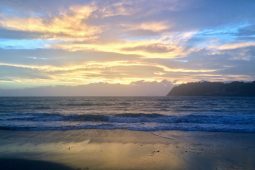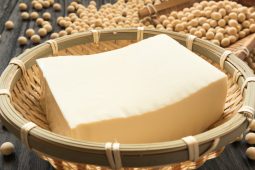When people think of sake regions, Yamaguchi is usually not the first to spring to mind. It doesn’t have the overwhelming history of the Nada region, the popular style of Niigata prefecture, or the incredible number of awards of Fukushima to help it stand out. There are a couple of superstar breweries that everyone knows, but the association between the prefecture and the brands seems thin. Yamaguchi just isn’t sake country, people seem to think.
Yamaguchi was not always such a minor player in the nihonshu world. Prior to World War 2, there were over 90 kura active in Yamaguchi, and the prefecture also housed two relatively large toji (brewmaster) guilds, which taught the brewmasters their skills and helped kura find someone to guide their production. The Kumage toji guild, centered in part of what is now Shunan city on the Seto Inland Sea, was the sixth largest guild in Japan prior to the war, and though it has shrunk to almost nothing, remarkably still has influence on the sake styles of western Yamaguchi. On the Japan Sea side of the prefecture, the Hagi toji made brews that matched the cooler, damper climate on that coast, meaning that there is still a subtle difference in flavor profiles between the two Yamaguchi coasts.
Now, there are roughly 40 kura running in Yamaguchi (the number is hard to confirm because some are dormant and outsourcing production to other brewers, and others are only available to their neighborhood) with 24 part of the Yamaguchi Sake Brewer’s Association, the Shuzokumiai. Of those, there are two that mostly everyone has heard of: Dassai from Asahi Shuzo and Toyobijin from Sumikawa Shuzo. Then there are the major traditional kura like Sakai Shuzo, makers of Gokyo, or Nakashimaya Shuzojo, makers of Kanenaka. However, the prefecture is home to many smaller breweries that fly under the radar and offer not only wonderful brews but fresh energy and innovation as well.
The sake breweries below still rest on the foundations of Yamaguchi sake brewing, with its light but sweet tendencies, while offering their own unique takes on tradition.
Shintani Shuzo 1673-1 Tokujihori, Yamaguchi, 747-0231 https://www.wakamusume.com/ Main Label(s): Wakamusume, Cinderella
Shintani Shuzo is quite possibly the smallest sakagura (sake brewery) in Japan, and one of the very few with a woman toji. With only two fulltime employees, the owner/sales manager Yoshinao Shintani and his wife, the Toji Fumiko, Shintani produces roughly 9,000 liters of sake a year (50 koku, to use the industry term) brewing year-round. Compare that to a modest brewer like Shunan’s Hatsumomidi Shuzo, which produces 300 koku (54,000 liters) brewing year-round, and you can see that the output is small indeed.
However, the sake they make is garnering attention world-wide. Just last year, their junmai Wakamusume Tsukikusa won platinum in the World Sake Selection Junmai Division in Brussels and Gold at the Kura Master competition in France. More recently, Toji Fujmiko Shintani took over brewing completely in 2018 and her first independent brew, Bunbun, was a hit that stores couldn’t keep on the shelves. Her second solo brew, Cinderella, was released last year and is a remarkable junmai daiginjo made with Yamaguchi’s original sake rice Saito no Shizuku milled to 38% for a delicate, elegantly sweet sake. Toji Shintani is bringing a distinctly feminine touch to the sake world while still creating full-flavoured, carefully crafted sakes.
Abu no Tsuru Shuzo 2796 Nago, Abu-cho, Abu-gun, Yamaguchi 759-3622abunotsuru.jp Main Label(s): Abu no Tsuru
Abu no Tsuru Shuzo is in the deep countryside of the San-in coast near Hagi, Yamaguchi. The kura went dormant for many years, but as a common recent pattern goes a young member of the founding family decided to revive the kura and brand with a fresh new look. One of the most striking things about Abu no Tsuru is the flare for design evident in the labels and marketing materials used. The current kuramoto (owner/manager) and toji, Ryutaro Miyoshi. Prior to reviving his family kura he was a graphic designer in Tokyo, and it shows. His labeling has won award after award, including the Good Design Award in 2017 and the Sake Competition 2017 Label Selection.
Of course, as with any kura it’s the sake the counts the most. Miyoshi expresses his obsession with detail in brewing as well as in design, using only locally grown Yamada Nishiki rice in all his brews, and focusing only on hard to make premium ginjo and daiginjo. The sakes, thus, are very much on the light, clean side with a quick finish and very pleasant sourness.
Nagayama Honke Shuzojo 138 Kurumaji, Ube, Yamaguchi 759-0133 www.domainetaka.com\ Main Label(s): Taka, Otokoyama
Toji Takahiro Nagayama is one of the foremost proponents of the concept of “terroir” in sake brewing. The French term is most often used for wine, and refers to how the locality of making something can influence its result, namely that the climate, the soil, the terrain and even the light can influence the taste of wine. In sake’s case, much of the flavor is a product of the process rather than any one ingredient, but of course the influence of nature cannot be denied. The year’s rice quality, the activity of the koji mold and yeast, even the water quality can all be influenced by the local climate and Nagayama is deeply invested in exploring that relationship.
To that end, he works directly with local rice farmers to control quality, and is experimenting with growing rice directly to shape his brews. In addition, Nagayama produces a premium sake with the unheard of mill rate of 80%, which is even less milled than table rice. This is done to create a more direct expression of the rice used, instead of focusing on the starch core as most ginjos and daiginjos do. The sake is rich and heady, full of hearty umami flavor but not at all overpowering, and it actually turns the idea that smaller mill rates are always better completely on its head.
Yachiyo Shuzo 3306 Kibeshimo, Hagi, Yamaguchi 758-0305 www.yachiyo-shuzo.com Main Label(s): Yachiyo, Room
Yachiyo Shuzo is also on the Japan Sea coast, and its traditional brews reflect the lighter, drier style of the area. However, this venerable kura is taking a new turn as the older toji, Satoru Kaba, is training his granddaughter Kumiko Kaba, the current Kuramoto, to take over brewing. She recently unveiled her first original brew, Room, under the new sublabel La+ Yachiyo. It has since taken the local sake world by storm. It’s a fresh, vibrant sake with a full balance of fruity sweetness and smooth acidity to cleanse the palate, while still having enough savory umami to stand up to mealtime pairing.
Jim Rion

